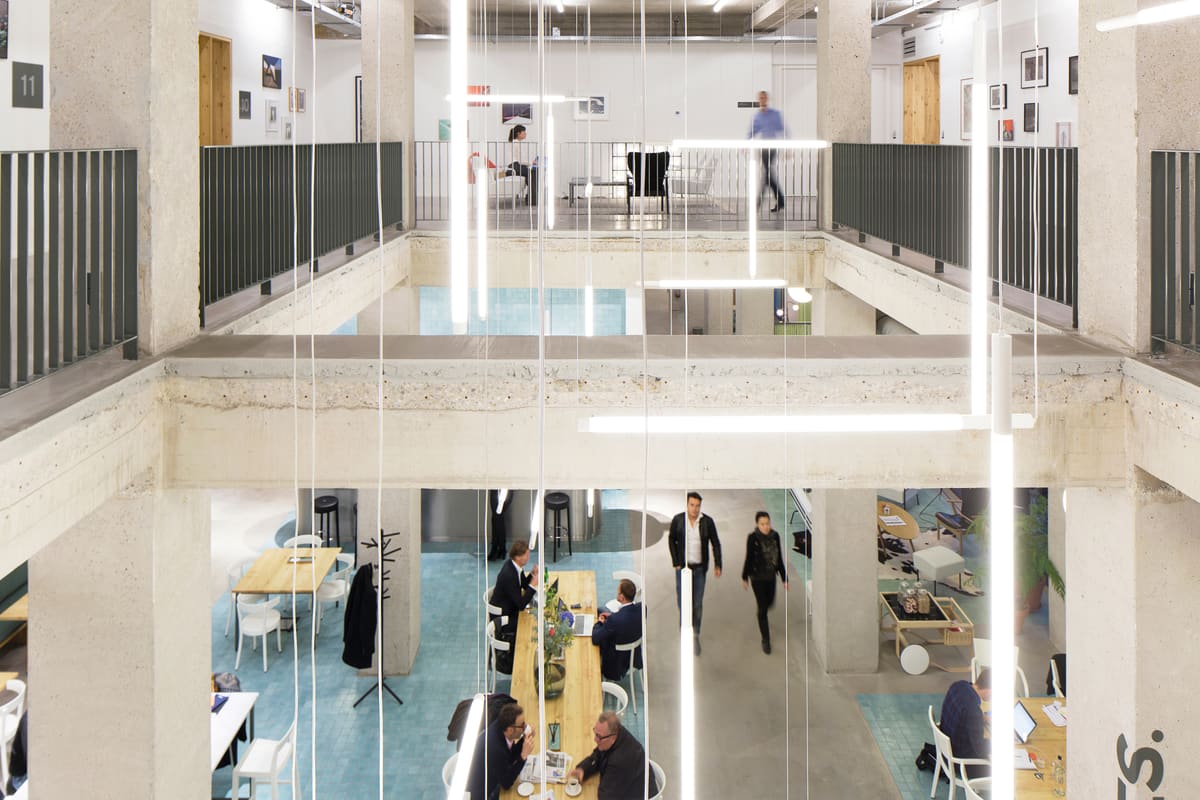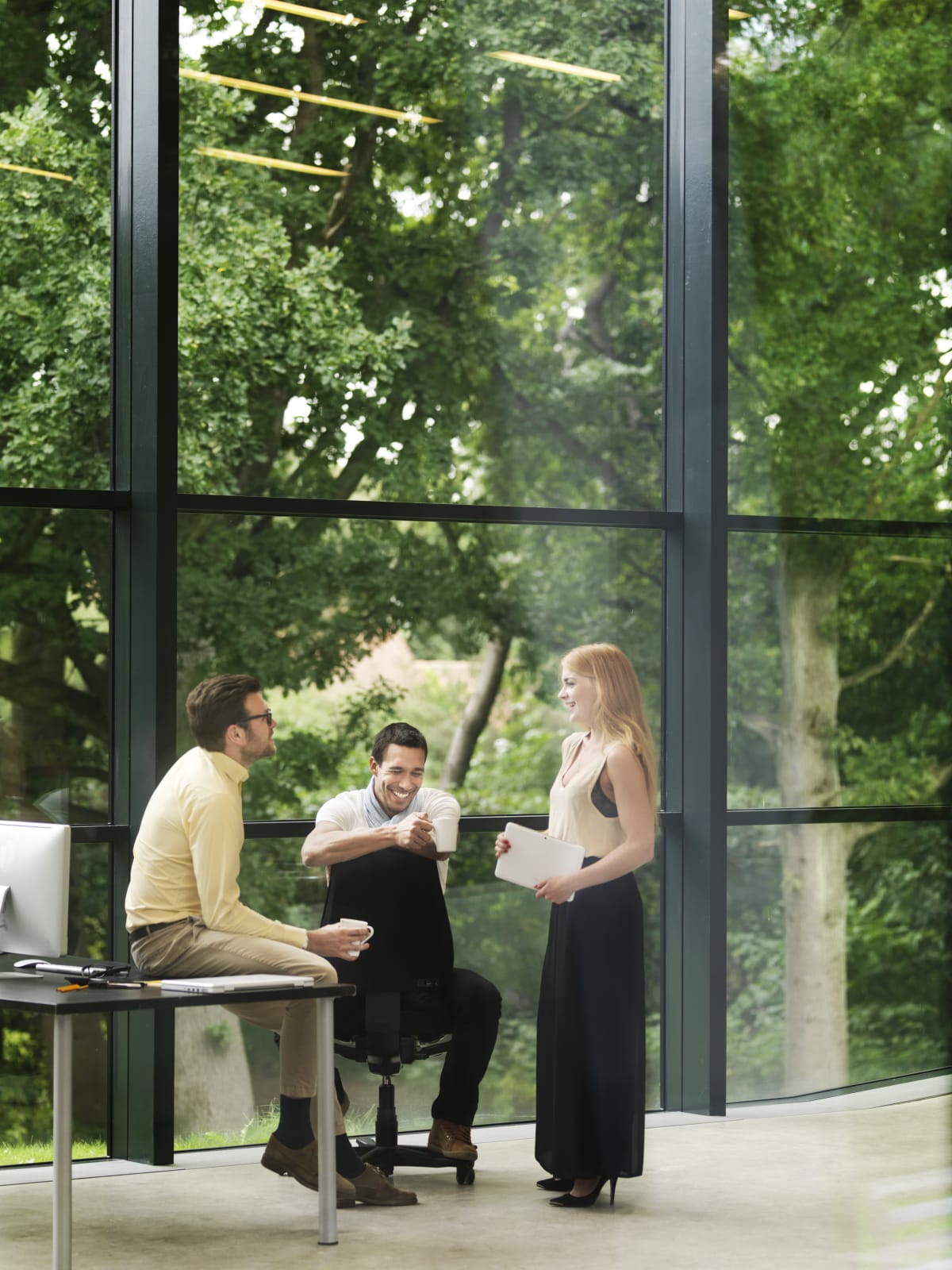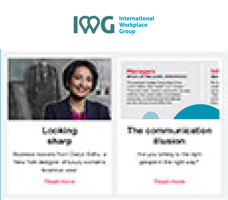Hybrid working has the potential to revitalise communities, as workers spend more time working at home or close to home. The ‘hub-and-spoke’ model and an increase in the number of flexible workspaces can also contribute to an increase in wellbeing and community spirit.
Bringing local to life
The ‘hub-and-spoke’ workspace model is already changing communities.“Big enterprises are moving away from relying on a single, central HQ and increasingly basing employees outside of the major metropolitan hubs in flexspaces in what we’re calling ‘outer-city’ locations: smaller cities, towns and suburban locations,” says IWG’s Mark Dixon. “In the near future, we believe that there will be a professional workspace available everywhere – from the largest city to the smallest village,” he adds.
“This transformation will unlock unprecedented value for workers, businesses and local economies, while providing an important contribution to improving the environment. With people working locally, local amenities and retail outlets will receive a boost and new jobs will be created to service a national network of workspaces.”
Dixon points out that IWG’s workspaces outside London’s orbital M25 motorway have surged in popularity during the pandemic, with towns on the outskirts of the capital emerging as working ‘hot spots’, while demand for space in the City of London has dropped 26%. In the last two years, almost all new IWG centres have been opened in non- city environments and regions away from major urban areas.
Life during lockdown also seems to have given many people a greater appreciation of their local area and a desire to spend more time there. “People want to work close to where they live,” says Dixon. “It’s going to stick. The most valuable real estate in the world may well be in Gerrards Cross [a Buckinghamshire town just beyond the M25], not Central London.”
According to IWG’s report on The Flex Economy, the economic and social benefits to local communities of new flexible workspaces are significant in terms of both job creation and value creation.
The 15-Minute Commute
The hub-and-spoke workspace model twinned with hybrid working also plays a key role in the development of the so-called ‘15-Minute City’. An urban planning concept developed by French academic Carlos Moreno, its central idea is that work, home, shops, entertainment, education and healthcare should all be within 15 minutes by foot or bicycle from where we live.
It has already been brought to life in Paris, where mayor Anne Hidalgo is currently engaged in an ‘ecological transformation’ of the French capital into a collection of neighbourhoods. Many other cities, including Milan, Edinburgh and Madrid, are working on developing the concept.
The 15-Minute City idea is seen as a way of making big cities sustainable in the future, with benefits for wellbeing and the environment at its core. As Paris has already demonstrated, it involves the creation of large, car-free green spaces, with numerous new cycle paths. These in turn encourage people to spend more time outside the house and foster a greater sense of community. The provision of affordable housing is also a key pillar in the concept: Hidalgo has pledged that nearly a third of the city’s housing stock will be in the public domain by 2030 – even in more wealthy neighbourhoods.
However, as Moreno himself has admitted, “Not all people have the possibility of having jobs within 15 minutes.” But if people can work at a nearby flexspace, that problem is solved, leading to what IWG has termed the ‘15-Minute Commute’, as workers embrace a working day that fits seamlessly into a local ecosystem catering for all of their needs.
Cultivate a sustainable working environment by partnering with IWG, and find out more about how the hybrid approach can help your business achieve its environmental goals in our white paper.






